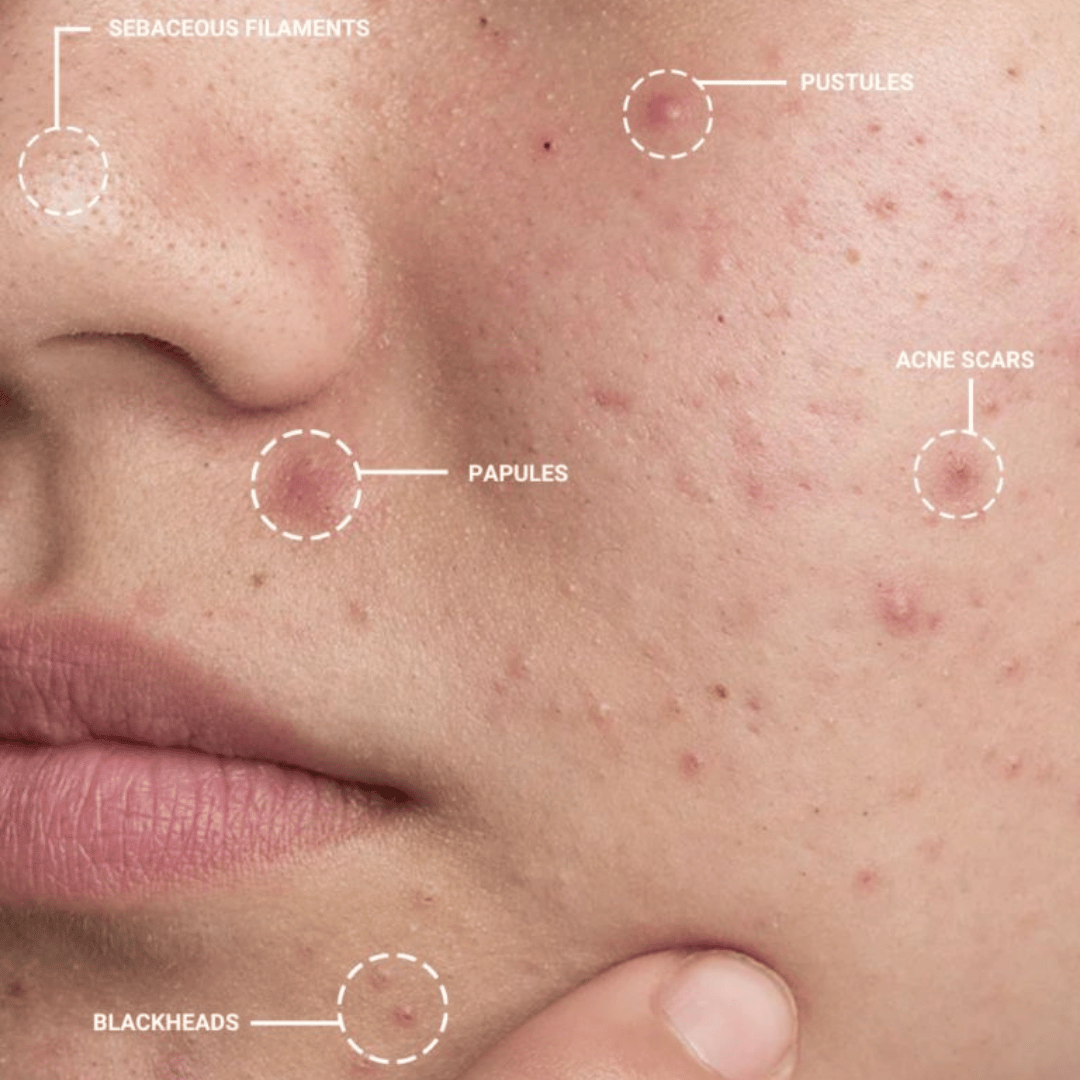Acne Dry Sensitive
Soothing, barrier-supporting formulas paired with gentle actives to reduce breakouts without the sting.
Before diving into types and treatments, it's essential to understand the root causes of teenage acne. During puberty, surging hormones like androgens increase oil (sebum) production in the skin. This excess oil, combined with dead skin cells and bacteria (Propionibacterium acnes), clogs pores and leads to inflammation. Factors like genetics, diet, stress, and skincare habits can exacerbate the issue. Early intervention with the right acne treatment for teens can prevent scarring and boost confidence.
Choose the routine that matches your skin type. We’ll take you to a curated selection of products recommended for teenage acne concerns.
Soothing, barrier-supporting formulas paired with gentle actives to reduce breakouts without the sting.
Balancing, pore‑refining products designed to control oil, decongest, and clear without over‑drying.








Acne isn't a one-size-fits-all condition—knowing the type helps in choosing effective treatments. Here's a clear overview of the main types of acne commonly seen in teenagers:

Identifying your acne type is the first step in building an effective routine. For teens with mild acne (whiteheads and blackheads), gentle daily care works wonders, while severe types like nodules or cysts may need professional help.
Teenage acne goes beyond skin deep—it can profoundly affect emotional and social well-being. Here are some key challenges:
Emotional Impact: Acne often coincides with a time of heightened self-consciousness. Studies show that teens with acne are more likely to experience anxiety, depression, and low self-esteem. The pressure from social media's filtered perfection can make it feel even worse.
Social and School Pressures: Breakouts can lead to bullying, avoidance of social activities, or reluctance to participate in school events like photos or presentations. This isolation can hinder personal development.
Persistence and Scarring: Unlike adult acne, teenage acne can last for years, with flare-ups tied to hormonal cycles, stress from exams, or sports. Without proper treatment, it risks permanent scarring or hyperpigmentation, which is harder to treat later.
Lifestyle Factors: Busy teen schedules mean inconsistent skincare routines, while factors like greasy foods, makeup, or helmet use in sports can worsen outbreaks. Plus, many teens experiment with harsh products, leading to irritated skin.
Addressing these challenges starts with education and support. Parents and teens should focus on building healthy habits, like consistent cleansing and stress management, to make acne more manageable.
The good news? Many effective acne treatments for teens use targeted ingredients that unclog pores, reduce inflammation, and kill bacteria. Start with gentle, non-comedogenic products to avoid irritation. Here's a guide to key ingredients and how they work:
Benzoyl Peroxide: A powerhouse for killing acne-causing bacteria and reducing inflammation. Ideal for pustules and papules; start with 2.5-5% concentrations to minimize dryness. Use it in spot treatments or cleansers for mild to moderate teenage acne.
Salicylic Acid: A beta-hydroxy acid (BHA) that exfoliates inside pores to clear blackheads and whiteheads. It's oil-soluble, making it great for oily teen skin. Look for 0.5-2% in face washes or pads—perfect for preventing breakouts.
Retinoids (like Adapalene): Available OTC as Differin, these vitamin A derivatives speed up cell turnover to prevent clogs. They're effective for all types but can cause initial purging; use at night with sunscreen during the day.
Niacinamide: A gentle anti-inflammatory that strengthens the skin barrier, reduces oil, and fades marks. At 5-10%, it's suitable for sensitive teen skin and pairs well with other actives.
Tea Tree Oil: A natural antibacterial option for mild acne. Dilute it to 5% to avoid irritation; it's a good alternative for those preferring plant-based treatments.
For best results, layer ingredients thoughtfully:
Morning: Cleanse with salicylic acid, apply niacinamide serum, and finish with sunscreen.
Evening: Spot-treat with benzoyl peroxide, then use a retinoid product.
Always patch-test new products and introduce one active at a time. If OTC options aren't enough, a dermatologist might recommend prescription topicals like tretinoin or antibiotics.
For teens with severe, scarring acne that doesn't respond to other treatments, Roaccutane (isotretinoin) can be a game-changer. This oral medication, derived from vitamin A, dramatically reduces oil production, shrinks sebaceous glands, and prevents new breakouts. It's often prescribed for nodular or cystic acne and can lead to long-term remission in 80-90% of cases.
If your teen is considering Roaccutane, discuss it thoroughly with a dermatologist. It's powerful but should be a last resort after trying topical and lifestyle changes.
Teenage acne can feel overwhelming, but with the right knowledge and treatments, it's highly manageable. Focus on consistent, gentle skincare routines using proven ingredients like salicylic acid and benzoyl peroxide, and seek professional help for severe cases. Whether you're exploring OTC options or considering Roaccutane, prioritise skin health to build confidence that lasts.
At SKIN functional, we offer teen-friendly, acne-fighting products formulated with these key ingredients. Browse our collection for cleansers, serums, and spot treatments designed for young skin. Always consult a healthcare professional before starting new treatments, and remember—clear skin is achievable!